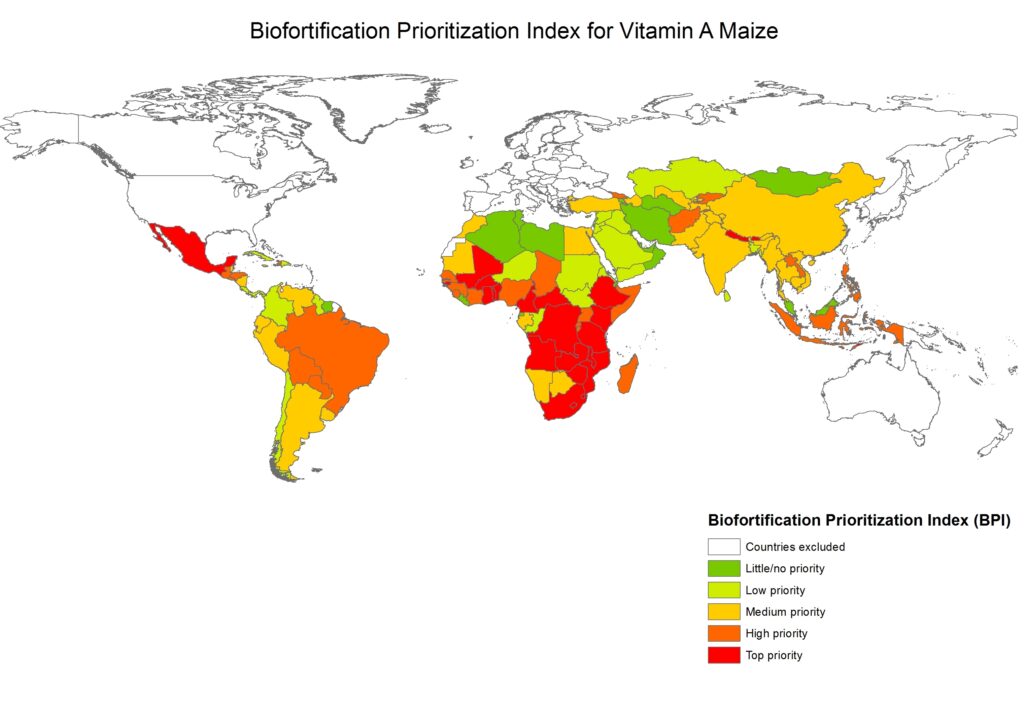In time for World Food Day, HarvestPlus today launched a new tool to guide strategic decision making on investing in biofortified (nutrient-rich) crops in developing countries. The Biofortification Prioritization Index (BPI) ranks countries according to their potential for introducing nutrient-rich staple food crops to fight micronutrient deficiencies, also known as hidden hunger.
The BPI focuses on the three key micronutrients (vitamin A, iron, and zinc) that the World Health Organization deems among the most limiting in diets. Lack of these and other micronutrients impairs cognitive and physical development and increases vulnerability to infectious diseases, especially among children and women. With one in three people worldwide suffering from hidden hunger, there has been considerable debate over intervention strategies, with increased attention being focused on approaches that can have the highest impact on reducing hidden hunger at the lowest cost.
“There is growing recognition of the potential of biofortification to tackle hidden hunger. Biofortification targets populations that are hardest-hit by micronutrient deficiency. These are usually rural households in the developing world that depend on staple food crops for their daily diet, and are less likely to be reached by other nutrition interventions like food supplements and fortification,” notes Ekin Birol, head of Impact and Policy at HarvestPlus and co-author of the tool. “The BPI is intended to help guide the decision making process about where, and in which biofortified crops, to invest for maximum impact.”
Following many years of research and development, nutrient-rich crops are now being rolled out to farmers around the world. Vitamin A orange sweet potato, maize and cassava, and iron-rich beans are already being planted and consumed by 400,000 farming households in Africa, while iron-rich pearl millet has reached 30,000 Indian farming households. HarvestPlus, which leads this global effort, plans to considerably expand the delivery of these crops, as well as introduce other biofortified crops. HarvestPlus aims to reach 10 million farming households in its target countries by 2018.
Based on an analysis of the country-level data on the prevalence of micronutrient deficiencies and production and consumption levels of target crops, the BPI indicates that crops rich in vitamin A and iron are likely to have a bigger impact in African countries, while zinc-rich crops are likely to benefit Asia the most. “HarvestPlus’s current choice of target countries broadly corresponds to the BPI rankings,” observes Birol.
Like many first-of-its-kind tools, however, the BPI is not perfect. Its main limitations are a lack of data on costs of biofortification in many countries and a reliance on national-level data that may or may not reflect sub-national variations and nuances. Nevertheless, Birol remains optimistic: “Biofortification is an exciting new frontier. The BPI is a valuable tool for any organization wishing to get involved in biofortification. We’re not going to perfect it the first time, but it’s important to get it out and have people start using it.”
